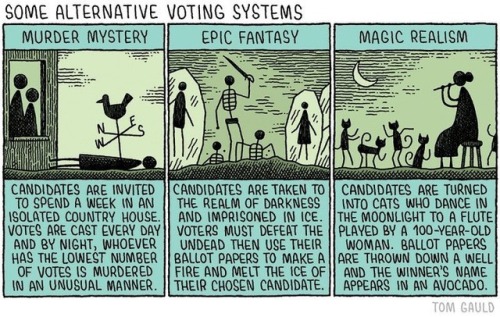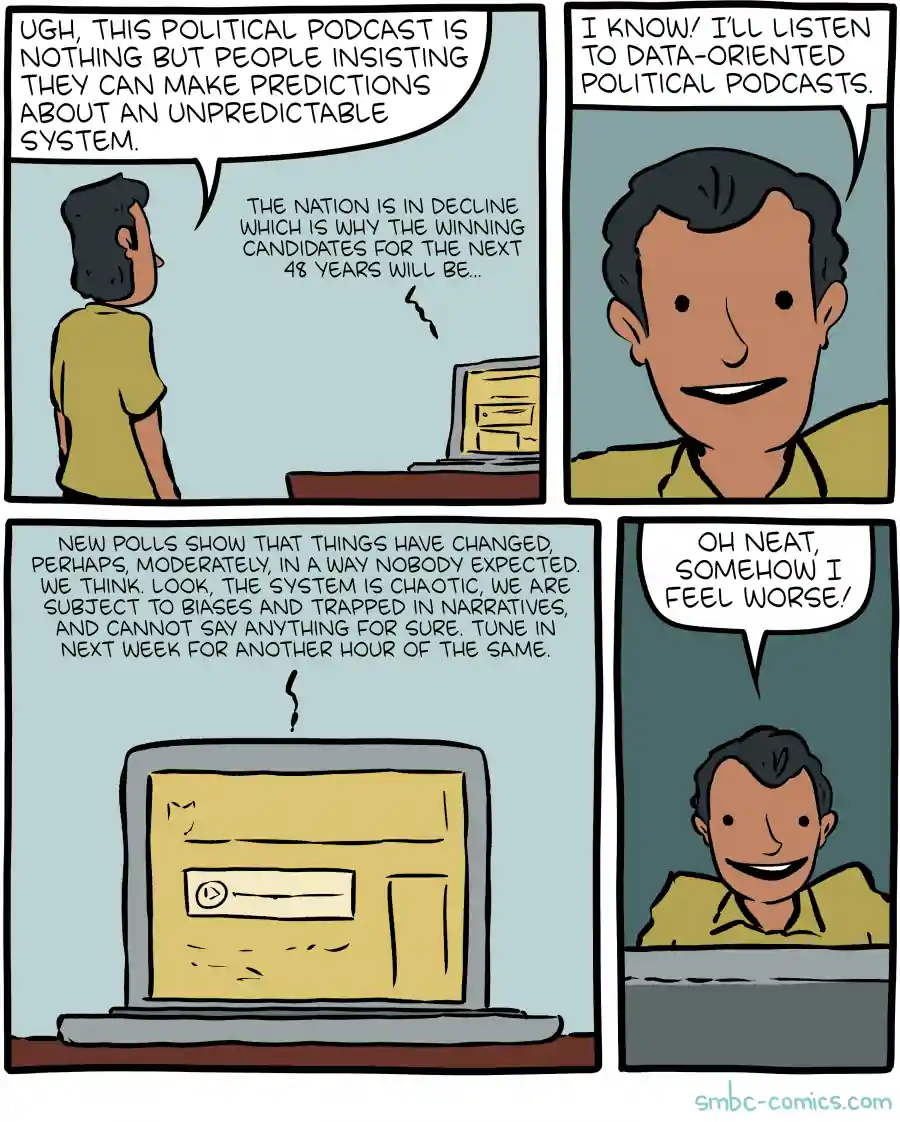Acemoglu, Ozdaglar, and ParandehGheibi. 2010.
“Spread of (Mis)information in Social Networks.” Games and Economic Behavior.
Achlioptas, Clauset, Kempe, et al. 2005.
“On the Bias of Traceroute Sampling: Or, Power-Law Degree Distributions in Regular Graphs.” In
Proceedings of the Thirty-Seventh Annual ACM Symposium on Theory of Computing. STOC ’05.
Ansolabehere, de Figueiredo, and Snyder. 2003.
“Why Is There so Little Money in U.S. Politics?” The Journal of Economic Perspectives.
Baldwin-Philippi. 2017.
“The Myths of Data-Driven Campaigning.” Political Communication.
Bareinboim, and Pearl. 2016.
“Causal Inference and the Data-Fusion Problem.” Proceedings of the National Academy of Sciences.
Battaglini, and Patacchini. 2019.
“Social Networks in Policy Making.” Annual Review of Economics.
Bergemann, and Bonatti. 2019.
“Markets for Information: An Introduction.” Annual Review of Economics.
Bonchi, Gullo, Mishra, et al. 2018.
“Probabilistic Causal Analysis of Social Influence.” In
Proceedings of the 27th ACM International Conference on Information and Knowledge Management. CIKM ’18.
Brodersen, Gallusser, Koehler, et al. 2015.
“Inferring Causal Impact Using Bayesian Structural Time-Series Models.” The Annals of Applied Statistics.
Bullock, Gerber, Hill, et al. 2013.
“Partisan Bias in Factual Beliefs about Politics.” Working Paper 19080.
Bursztyn, and Birnbaum. 2019. “Thousands of Small, Constant Rallies: A Large-Scale Analysis of Partisan WhatsApp Groups.”
Cheng, Bernstein, Danescu-Niculescu-Mizil, et al. 2017.
“Anyone Can Become a Troll: Causes of Trolling Behavior in Online Discussions.” In
Proceedings of the 2017 ACM Conference on Computer Supported Cooperative Work and Social Computing.
Crawford, and Sobel. 1982.
“Strategic Information Transmission.” Econometrica: Journal of the Econometric Society.
Degroot. 1974.
“Reaching a Consensus.” Journal of the American Statistical Association.
Evans. 2017.
“The Economics of Attention Markets.” SSRN Scholarly Paper ID 3044858.
Feuerverger, He, and Khatri. 2012.
“Statistical Significance of the Netflix Challenge.” Statistical Science.
Goel, Anderson, Hofman, et al. 2015.
“The Structural Virality of Online Diffusion.” Management Science.
Goel, Hofman, Lahaie, et al. 2010.
“Predicting Consumer Behavior with Web Search.” Proceedings of the National Academy of Sciences.
Goel, Mason, and Watts. 2010.
“Real and Perceived Attitude Agreement in Social Networks.” Journal of Personality and Social Psychology.
Granovetter, Mark S. 1973.
“The Strength of Weak Ties.” The American Journal of Sociology.
Jordà, Knoll, Kuvshinov, et al. 2019.
“The Rate of Return on Everything, 1870–2015.” The Quarterly Journal of Economics.
Karpf. 2018.
“Analytic Activism and Its Limitations.” Social Media + Society.
Kellow, and Steeves. 1998.
“The Role of Radio in the Rwandan Genocide.” Journal of Communication.
Kennedy, Mauro, Daniels, et al. 2019.
“Handling Missing Data in Instrumental Variable Methods for Causal Inference.” Annual Review of Statistics and Its Application.
King, Pan, and Roberts. 10000. “How the Chinese Government Fabricates Social Media Posts for Strategic Distraction, Not Engaged Argument.” American Political Science Review.
Kohler, Kreuter, and Stuart. 2019.
“Nonprobability Sampling and Causal Analysis.” Annual Review of Statistics and Its Application.
Kulkarni. 2016.
“Temporal Evolution of Social Innovation: What Matters?” SIAM Journal on Applied Dynamical Systems.
Lee, Karimi, Jo, et al. 2017.
“Homophily Explains Perception Biases in Social Networks.” arXiv:1710.08601 [Physics].
Lewis. n.d. “Broadcasting the Reactionary Right on YouTube.”
Little, Roderick JA. 1991. “Inference with Survey Weights.” Journal of Official Statistics.
Little, R. J. A. 1993.
“Post-Stratification: A Modeler’s Perspective.” Journal of the American Statistical Association.
Machado, Kira, Narayanan, et al. 2019.
“A Study of Misinformation in WhatsApp Groups with a Focus on the Brazilian Presidential Elections.” In
Companion Proceedings of The 2019 World Wide Web Conference. WWW ’19.
Maley, and Medew. 1991.
“Some Approaches to Election Night Forecasting in Australia.” Australian Journal of Political Science.
Noelle-Neumann. 1974.
“The Spiral of Silence A Theory of Public Opinion.” Journal of Communication.
Persily. 2017.
“Can Democracy Survive the Internet?” Journal of Democracy.
Ribeiro, Ottoni, West, et al. 2019.
“Auditing Radicalization Pathways on YouTube.” arXiv:1908.08313 [Cs].
Sarigol, Garcia, and Schweitzer. 2014.
“Online Privacy As a Collective Phenomenon.” In
Proceedings of the Second ACM Conference on Online Social Networks. COSN ’14.
Stewart, Arif, and Starbird. 2018. “Examining Trolls and Polarization with a Retweet Network.”
Tan, Niculae, Danescu-Niculescu-Mizil, et al. 2016.
“Winning Arguments: Interaction Dynamics and Persuasion Strategies in Good-Faith Online Discussions.” In
Proceedings of the 25th International Conference on World Wide Web. WWW ’16.
Treisman. 2017.
“Democracy by Mistake.” Working Paper 23944.
Wang, Rothschild, Goel, et al. 2015.
“Forecasting Elections with Non-Representative Polls.” International Journal of Forecasting.
Watts, Duncan J., and Dodds. 2007.
“Influentials, Networks, and Public Opinion Formation.” Journal of Consumer Research.
Watts, Duncan J, and Strogatz. 1998.
“Collective Dynamics of ‘Small-World’ Networks.” Nature.
Yadav, Prunelli, Hoff, et al. 2016.
“Causal Inference in Observational Data.” arXiv:1611.04660 [Cs, Stat].
Yang, Long, Smola, et al. 2011.
“Like Like Alike: Joint Friendship and Interest Propagation in Social Networks.” In
Proceedings of the 20th International Conference on World Wide Web. WWW ’11.
Zarezade, Upadhyay, Rabiee, et al. 2017.
“RedQueen: An Online Algorithm for Smart Broadcasting in Social Networks.” In
Proceedings of the Tenth ACM International Conference on Web Search and Data Mining. WSDM ’17.

